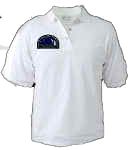CELEBRATING ASTRONOMY
IN IRELANDS
MIDWEST SINCE 1986
Home Up About The Club Joining the Club Contact the Committee Club News Meetings Timetable Club Equipment Observing Sites Burren Starparty Gallery Observing Guide Weather Books/Shops + Links

Eyepiece Calculator:
|
The following
table shows all the club eyepieces available with both the 10 and 12 inch
club telescopes. The 1.6 barlow value below represents the barlowed binoviewer that goes with the 10" scope, you can put your own barlow value in there, common values would be 1.5, 2, 3, no barlow would be a value of 1. Aperture and focal length should be in the instructions of your scope, the focal length of the eyepiece is usually on a sticker or engraved onto the eyepiece. The eyepieces apparent field of view (aFOV) is as particular to an eyepeice as its focal length, if its not printed on the eyepiece then it can usually be found on the web, at the bottom of this page is a list of aFOV's for some of the most popular eyepieces. The aFOV is the width in degrees of the field as seen through just the eyepiece alone. If you have two eyepieces with the same focal length, the one with the larger apparent field of view will show more of the sky if inserted into the same telescope. This parameter is determined by the design of the lenses inside an eyepiece. The exit pupil is the size of the light cone leaving the eyepiece, if it's above 7mm then you're effectively stepping down the aperture of your scope, if its very low (<1mm) then the eyepiece can be difficult to see into. The lenses in an eyepiece form an image that floats in midair just outside the lens closest to your eye. When you observe you place your eye so that it can see this exit pupil image. If all is going as planned, the image size will fit with room to spare within your eye. The size of this image is the exit pupil The True Field of View (FOV) is measured in degrees, the bigger it is, then the wider the image will be. A small true FOV would look like youre looking through a long narrow tube, a very wide FOV can give you an almost spacewalk experience. The true FOV is the field of view of the entire telescope system, including the eyepiece The maximum magnification given below is the absolute maximum the optics can do, the practical maximum is often alot less then this because of atmospheric seeing, miscollimation and warm optics. Going below the minimum magnification will effectively reduce the aperture of your telescope.
|


